Women’s History Month: Inspiring Women of History
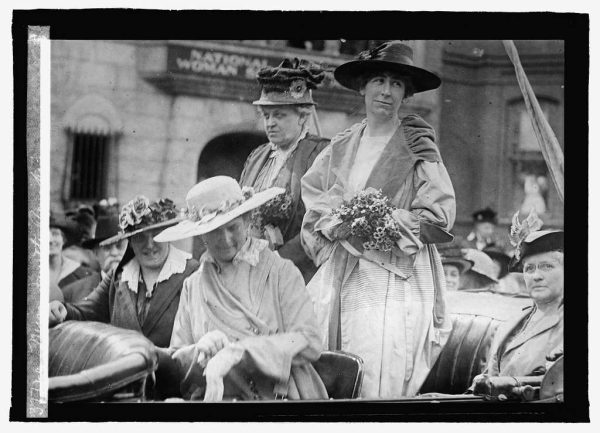
Jeannette Rankin, a trailblazing politician and lifelong advocate for peace and women’s rights, is a powerful figure to honor during Women’s History Month. Born in 1880 in Montana, Rankin grew up in a time when women had few political rights, yet she was determined to change that. A dedicated suffragist, she worked tirelessly to secure voting rights for women, playing a key role in Montana granting women the right to vote in 1914. Just two years later, in 1916, Rankin made history as the first woman ever elected to the U.S. Congress—four years before the 19th Amendment granted women the right to vote nationwide. As a congresswoman, she championed women’s rights, social welfare, and pacifism. She made headlines by voting against U.S. entry into World War I, staying true to her deep commitment to peace. After a long break from politics, she was re-elected to Congress in 1940, becoming the only member to vote against U.S. involvement in World War II following the attack on Pearl Harbor. Though widely criticized for her stance, she remained unwavering in her belief in nonviolence. Even after leaving office, she continued advocating for peace and social justice, protesting the Vietnam War in the 1960s. Rankin’s legacy as a fearless leader and advocate for equality paved the way for women in politics. Honoring her during Women’s History Month serves as a reminder of the importance of standing by one’s principles and breaking barriers for future generations of women in leadership.
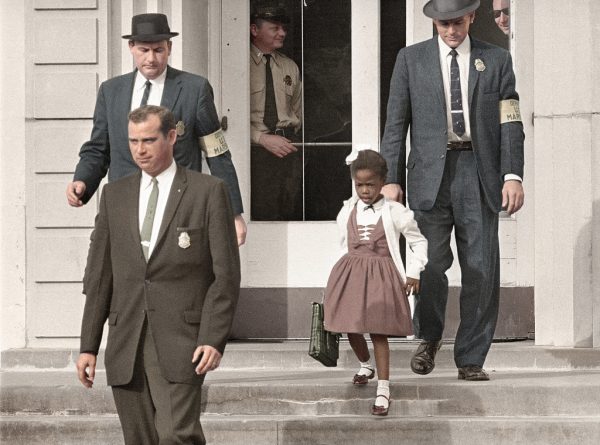
Ruby Bridges, a symbol of courage and resilience in the fight for civil rights, is an inspiring figure to honor during Women’s History Month. Born in 1954 in Tylertown, Mississippi, and raised in New Orleans, Bridges made history at just six years old when she became the first Black child to integrate an all-white elementary school in the South. In 1960, following the landmark Brown v. Board of Education Supreme Court ruling, she was selected to attend William Frantz Elementary School in New Orleans. On her first day, she was escorted by U.S. marshals as angry white mobs protested her presence. Despite the hostility, Bridges remained determined, attending school daily as the only student in her class because white parents pulled their children out. Her teacher, Barbara Henry, provided her with an education and unwavering support. Bridges’ bravery was instrumental in the desegregation of public schools, paving the way for future generations of Black students. As an adult, she continued advocating for education and racial equality, establishing the Ruby Bridges Foundation to promote tolerance and unity among children. Her story is immortalized in Norman Rockwell’s famous painting The Problem We All Live With and in history books that recognize her role in the civil rights movement. Ruby Bridges’ courage at such a young age continues to inspire people worldwide, reminding us of the importance of fighting for justice and equality. Honoring her during Women’s History Month highlights the power of resilience, education, and standing up for what is right.

Marie Curie, a groundbreaking scientist and the first woman to win a Nobel Prize, is a remarkable figure to celebrate during Women’s History Month. Born in 1867 in Warsaw, Poland, Curie faced significant barriers as a woman pursuing higher education. Determined to study science, she moved to Paris and attended the Sorbonne, where she excelled in physics and mathematics. Alongside her husband, Pierre Curie, she conducted pioneering research on radioactivity, a term she coined. Their work led to the discovery of two new elements, polonium and radium. In 1903, Curie became the first woman to win a Nobel Prize in Physics, sharing the honor with Pierre and physicist Henri Becquerel. After Pierre’s tragic death in 1906, Curie continued their research, becoming the first female professor at the Sorbonne. In 1911, she won a second Nobel Prize, this time in Chemistry, for her work in isolating pure radium. She remains the only person to have won Nobel Prizes in two different scientific fields. Curie’s research revolutionized medicine, leading to the development of radiation therapy for cancer treatment. During World War I, she developed mobile X-ray units to aid battlefield medical care. Despite facing gender discrimination, she persisted, proving that women belonged in science. Her contributions paved the way for future generations of women in STEM. Marie Curie’s brilliance, resilience, and dedication to knowledge make her an essential figure to honor during Women’s History Month, inspiring countless women to pursue careers in science and break barriers in male-dominated fields.
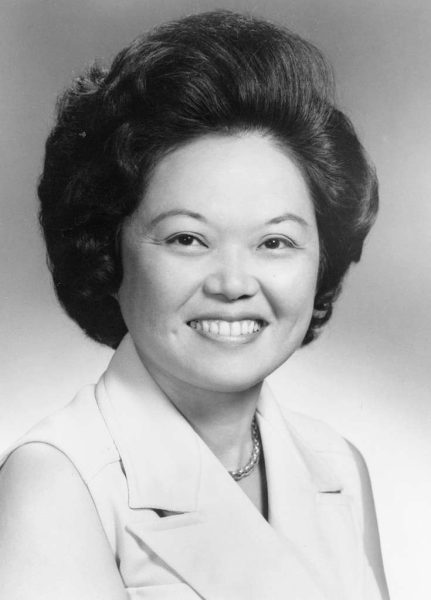
Patsy Mink, a trailblazing politician and champion for gender and racial equality, is a remarkable figure to celebrate during Women’s History Month. Born in 1927 in Hawaii to Japanese-American parents, Mink faced racial and gender discrimination throughout her life. Despite excelling academically, she was rejected from numerous medical schools because she was a woman. Undeterred, she pursued law instead, becoming the first Japanese-American woman to practice law in Hawaii. Her passion for justice led her into politics, and in 1964, she made history as the first woman of color elected to the U.S. Congress. Mink was a fierce advocate for civil rights, education, and women’s rights, co-authoring Title IX, the landmark legislation that prohibited sex-based discrimination in federally funded education programs. Thanks to her efforts, generations of women gained greater access to educational and athletic opportunities. Throughout her career, Mink fought tirelessly for social justice, environmental protections, and healthcare reform, always prioritizing the needs of marginalized communities. She ran for president in 1972 as an anti-war candidate, further breaking barriers for women of color in politics. Even after leaving Congress, she remained committed to public service until her passing in 2002. Her legacy lives on through Title IX and her unwavering dedication to equality. Patsy Mink’s life exemplifies courage, resilience, and the power of advocacy, making her an essential figure to honor during Women’s History Month. Her groundbreaking achievements continue to inspire future generations of women to fight for justice and break barriers in every field.
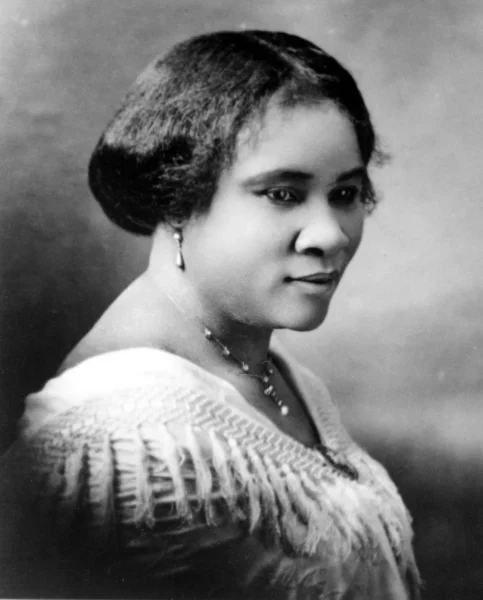
Madam C.J. Walker, America’s first self-made female millionaire, was a trailblazing entrepreneur and philanthropist whose achievements make her an inspiring figure to celebrate during Women’s History Month. Born Sarah Breedlove in 1867 in Louisiana, she was the first in her family to be born free after the abolition of slavery. Orphaned at a young age and working as a washerwoman, Walker faced poverty and hardship but remained determined to create a better life for herself. After experiencing hair loss due to scalp conditions, she developed a line of hair care products specifically for Black women. Through hard work, innovation, and strategic marketing, she built a thriving business, the Madam C.J. Walker Manufacturing Company. Walker not only created economic opportunities for herself but also provided jobs for thousands of Black women as sales agents, encouraging financial independence and entrepreneurship. Beyond her business success, she was a dedicated philanthropist and activist, donating to charities, funding scholarships, and advocating for civil rights. She contributed to the NAACP’s anti-lynching efforts and supported Black educational institutions. By the time of her passing in 1919, Walker had amassed great wealth and influence, leaving behind a legacy of empowerment and economic progress for Black women. Her story is a testament to resilience, vision, and the power of perseverance. Madam C.J. Walker’s impact on beauty, business, and social justice makes her an essential figure to honor during Women’s History Month, inspiring generations of women to break barriers and achieve success against the odds.
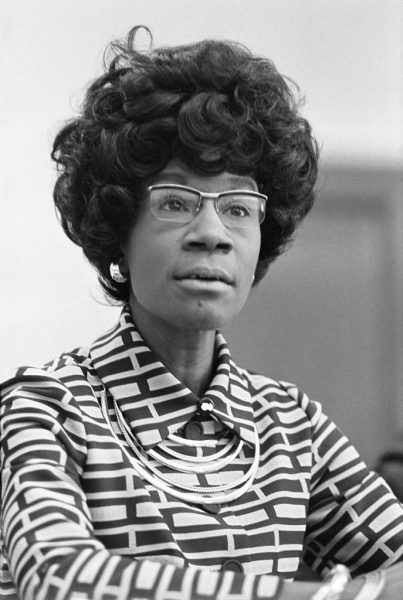
Shirley Chisholm, a political trailblazer and advocate for equality, is a powerful figure to celebrate during Women’s History Month. Born in 1924 in Brooklyn, New York, to Caribbean immigrant parents, Chisholm grew up valuing education and hard work. She earned a master’s degree in education and worked as a teacher before entering politics. In 1968, she made history as the first Black woman elected to the U.S. Congress, representing New York’s 12th congressional district. Once in office, Chisholm was a fearless advocate for marginalized communities, fighting for racial and gender equality, affordable childcare, and education reform. She boldly declared herself “unbought and unbossed,” refusing to be controlled by political machines. In 1972, she shattered barriers again by becoming the first Black woman to run for president under a major party, challenging the Democratic establishment despite facing racism and sexism. Though she did not win, her candidacy paved the way for future generations of women and people of color in politics. Throughout her seven terms in Congress, Chisholm remained a champion for progressive policies and social justice. After leaving politics, she continued to fight for education and women’s rights. Her legacy as a trailblazer and advocate continues to inspire leaders today. Shirley Chisholm’s courage, determination, and groundbreaking achievements make her an essential figure to honor during Women’s History Month, reminding us all of the power of perseverance and the importance of fighting for justice, representation, and equality in every field.
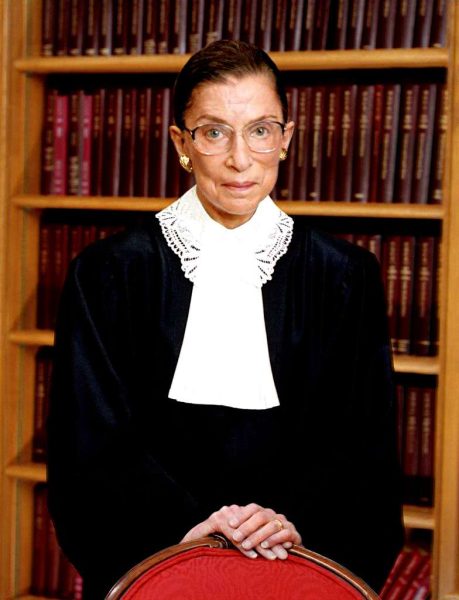
Ruth Bader Ginsburg, a trailblazing Supreme Court justice and lifelong advocate for gender equality, is an inspiring figure to honor during Women’s History Month. Born in 1933 in Brooklyn, New York, Ginsburg excelled academically despite facing significant gender discrimination. She attended Harvard Law School as one of only nine women in her class before transferring to Columbia Law School, where she graduated first in her class. Despite her outstanding credentials, she struggled to find employment as a lawyer due to widespread sexism. Undeterred, she became a law professor and co-founded the Women’s Rights Project at the ACLU, where she argued landmark cases that helped dismantle gender-based discrimination in American law. In 1993, she made history as the second woman appointed to the U.S. Supreme Court, where she served for 27 years. Known for her sharp legal mind and unwavering commitment to justice, she wrote powerful opinions that protected civil rights, women’s rights, and voting rights. Ginsburg became a cultural icon, affectionately known as “The Notorious RBG,” inspiring generations with her resilience and dedication to equality. Even while battling serious health challenges, she remained committed to her work until her passing in 2020. Her legacy continues to shape the fight for gender equality and social justice. Ruth Bader Ginsburg’s life serves as a testament to perseverance, intellect, and the power of using one’s voice to create change, making her a fitting figure to celebrate during Women’s History Month as a champion of justice and equality.
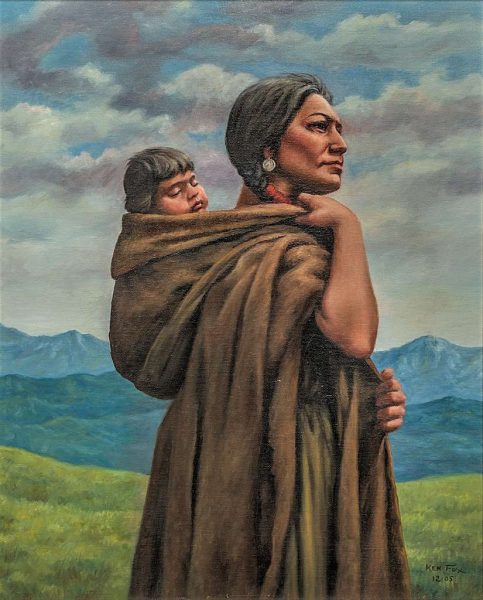
Sacagawea, a remarkable Lemhi Shoshone woman, played a crucial role in one of the most significant expeditions in American history, making her an inspiring figure to honor during Women’s History Month. Born around 1788 in what is now Idaho, she was kidnapped by the Hidatsa people as a child and later sold into marriage to French-Canadian trader Toussaint Charbonneau. In 1804, she joined the Lewis and Clark Expedition as an interpreter and guide, traveling thousands of miles from the Great Plains to the Pacific Ocean while carrying her infant son, Jean Baptiste, on her back. Her knowledge of the land, ability to communicate with Native tribes, and resourcefulness were invaluable to the success of the expedition. She played a critical role in securing horses from the Shoshone, which allowed the group to cross the Rocky Mountains. Her calm presence also helped ease tensions with Indigenous groups they encountered. Despite her young age and difficult circumstances, Sacagawea demonstrated extraordinary resilience, intelligence, and strength. While much of her later life remains a mystery, her legacy as a pioneering woman and cultural bridge between Native Americans and explorers endures. She has been honored with statues, coins, and historical recognition, symbolizing courage and perseverance. Sacagawea’s story reminds us of the often-overlooked contributions of Indigenous women in history, making her a fitting figure to celebrate during Women’s History Month as an example of leadership, survival, and the power of knowledge.
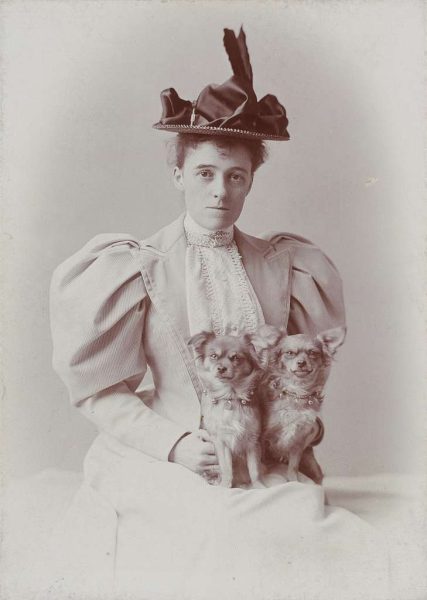
Edith Wharton, a literary trailblazer and the first woman to win the Pulitzer Prize for Fiction, is an inspiring figure to celebrate during Women’s History Month. Born in 1862 into a wealthy New York family, Wharton defied societal expectations by pursuing a career in writing at a time when women were discouraged from intellectual pursuits. She had a deep fascination with literature from an early age, publishing her first collection of poems at just 16. However, it was her keen observations of high society and her sharp, satirical writing that set her apart. Her most famous works, including The House of Mirth, Ethan Frome, and The Age of Innocence, critiqued the rigid social structures of the Gilded Age, particularly the constraints placed on women. In 1921, she became the first woman to win the Pulitzer Prize for The Age of Innocence, a novel that explored themes of love, duty, and societal pressure. Beyond her literary achievements, Wharton was also a dedicated humanitarian, using her wealth and influence to aid refugees in France during World War I. She was awarded the French Legion of Honor for her relief efforts. Throughout her career, she paved the way for women in literature by proving that women’s voices and perspectives belonged in serious fiction. Edith Wharton’s legacy continues to inspire writers and readers alike, making her a fitting figure to honor during Women’s History Month as a woman who used her intellect and talent to challenge conventions and shape literary history.
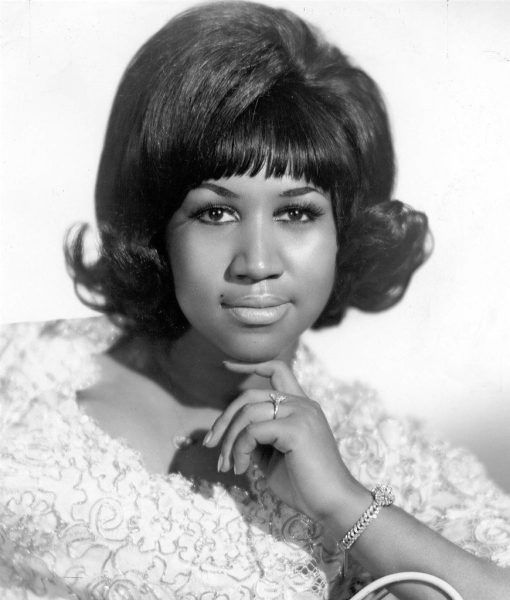
Aretha Franklin, the “Queen of Soul,” is an iconic figure whose music and legacy continue to inspire generations, making her a powerful figure to celebrate during Women’s History Month. Born in 1942 in Memphis, Tennessee, Franklin grew up in a musical family with her father, a prominent pastor, and her mother, a talented singer. Aretha’s extraordinary vocal talent became evident at a young age, and by the time she was in her teens, she was already recording gospel music. Her transition to secular music in the late 1950s marked the beginning of a legendary career that spanned over five decades. Franklin’s unique ability to blend gospel, jazz, blues, and R&B helped her produce timeless hits like “Respect,” “Think,” “Chain of Fools,” and “I Say a Little Prayer.” These songs, particularly “Respect,” became anthems for the civil rights and feminist movements, as they boldly called for empowerment and equality. Throughout her career, Aretha Franklin broke barriers in the music industry, becoming the first woman inducted into the Rock and Roll Hall of Fame in 1987. She earned numerous Grammy Awards and accolades, and her contributions to music, culture, and social change were unparalleled. Beyond her musical success, Franklin was also an advocate for civil rights and used her platform to stand up for justice. Aretha Franklin’s legacy as an artist, activist, and trailblazer in the music industry serves as a reminder of the immense power of women in shaping culture and fighting for equality.
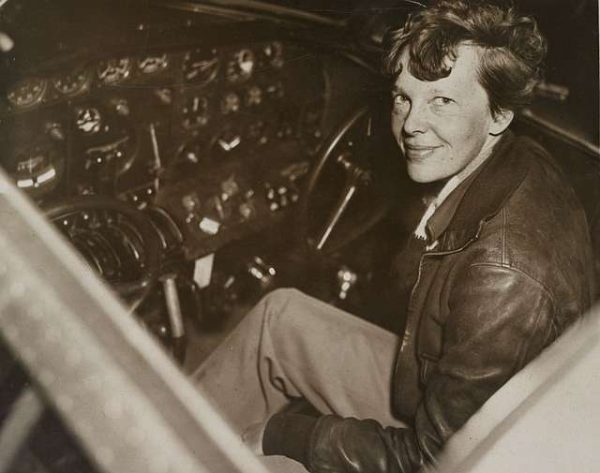
Amelia Earhart, a pioneering aviator and symbol of fearless ambition, is a remarkable figure to celebrate during Women’s History Month. Born in 1897 in Atchison, Kansas, Earhart defied societal expectations by pursuing a career in aviation at a time when few women flew planes. In 1928, she became the first woman to fly across the Atlantic Ocean as a passenger, but she was determined to achieve even more. In 1932, she made history as the first woman to fly solo across the Atlantic, enduring extreme weather and mechanical challenges during the nearly 15-hour flight from Newfoundland to Ireland. Her groundbreaking achievements continued as she set multiple aviation records, including becoming the first person to fly solo from Hawaii to California. Earhart was not only a record-breaking pilot but also an advocate for women’s rights, encouraging more women to enter the field of aviation and breaking barriers in a male-dominated industry. In 1937, during an ambitious attempt to circumnavigate the globe, she mysteriously disappeared over the Pacific Ocean, sparking one of history’s greatest unsolved mysteries. Despite her disappearance, her legacy endures as a symbol of courage, perseverance, and breaking boundaries. She inspired generations of women to chase their dreams, no matter how impossible they seemed. Her contributions to aviation and gender equality continue to be celebrated today, making her an essential figure to honor during Women’s History Month as a reminder that women belong in every field—including the skies.
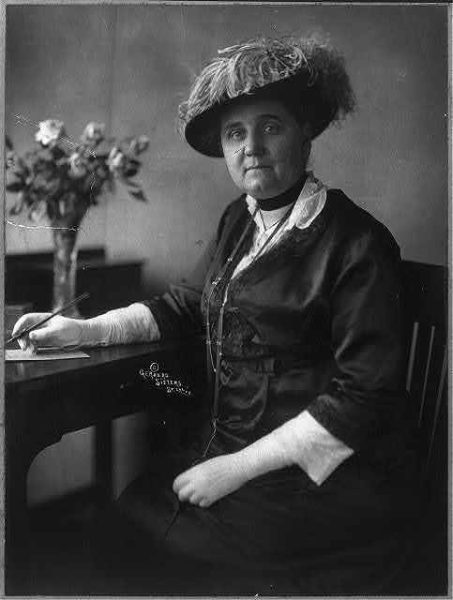
Jane Addams, a trailblazing social reformer and advocate for peace, is a powerful figure to honor during Women’s History Month. Born in 1860 in Cedarville, Illinois, Addams defied societal expectations by dedicating her life to helping the poor, promoting social justice, and advancing women’s rights. In 1889, she co-founded Hull House in Chicago, one of the first and most influential settlement houses in the United States. Hull House provided essential services such as education, childcare, job training, and healthcare to immigrants and working-class families, setting a model for social work that is still followed today. Addams believed in the power of community and worked tirelessly to improve living conditions in industrial cities. Beyond Hull House, she was a leading advocate for women’s suffrage, labor rights, and public health. Her activism extended to the international stage when she became a vocal peace advocate during World War I, co-founding the Women’s International League for Peace and Freedom. Despite criticism for her pacifist stance, she remained committed to nonviolence and diplomacy. In 1931, Addams became the first American woman to receive the Nobel Peace Prize, recognizing her lifelong dedication to humanitarian efforts. Her work laid the foundation for modern social work, inspiring countless individuals to fight for equality and justice. Jane Addams’ legacy as a reformer, feminist, and advocate for the underprivileged continues to resonate today, making her a fitting figure to celebrate during Women’s History Month as a reminder of the power of compassion and activism.
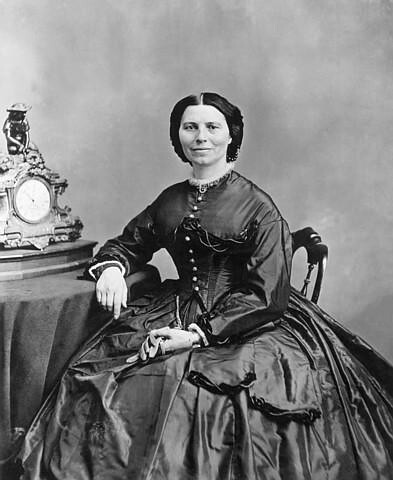
Clara Barton, known as the “Angel of the Battlefield,” was a pioneering nurse and humanitarian whose contributions to medicine and disaster relief make her a remarkable figure to celebrate during Women’s History Month. Born in 1821 in North Oxford, Massachusetts, Barton demonstrated compassion and determination from an early age. During the American Civil War, she provided medical care to wounded soldiers directly on the battlefield, earning her famous nickname. At a time when women were rarely involved in war efforts beyond traditional roles, Barton defied expectations by bringing supplies, tending to the injured, and offering comfort to those in need. Her tireless work saved countless lives and revolutionized battlefield medicine. After the war, she continued her humanitarian efforts by helping locate missing soldiers and advocating for veterans’ rights. Inspired by her experiences in Europe, she founded the American Red Cross in 1881, establishing an organization that would provide emergency aid during disasters and wars. Under her leadership, the Red Cross expanded its mission to include peacetime disaster relief, setting the foundation for the organization’s modern role. Barton’s relentless dedication to helping others broke barriers for women in medicine and emergency response. Even after stepping down from the Red Cross, she remained an advocate for social causes, including women’s rights. Her legacy continues to inspire generations of nurses, humanitarians, and leaders in disaster relief. Honoring her during Women’s History Month serves as a reminder of the power of compassion, perseverance, and the lasting impact one woman can have on the world.

Malala Yousafzai is a symbol of resilience, courage, and the ongoing fight for girls’ education, making her an essential figure to celebrate during Women’s History Month. Born in 1997 in Pakistan’s Swat Valley, Malala grew up in a society where the Taliban sought to ban girls from attending school. Encouraged by her father, an educator, she developed a passion for learning and became an outspoken advocate for girls’ education at a young age. At just 11 years old, she began writing a blog under a pseudonym for the BBC, detailing life under Taliban rule and the challenges girls faced in pursuing an education. Her activism made her a target, and in 2012, at the age of 15, she was shot in the head by a Taliban gunman while riding a school bus. Miraculously, she survived and was flown to the UK for medical treatment. Rather than silencing her, the attack only strengthened her resolve. Malala continued her advocacy on a global scale, co-founding the Malala Fund, which works to ensure girls worldwide have access to education. In 2014, at just 17, she became the youngest recipient of the Nobel Peace Prize. Malala has since graduated from Oxford University and remains a powerful voice for education and gender equality. Her story is a testament to the power of young women to create change, making her a fitting figure to honor during Women’s History Month as an inspiration to those fighting for justice, equality, and the right to education.

Ada Lovelace, often regarded as the world’s first computer programmer, is a groundbreaking figure to celebrate during Women’s History Month. Born in 1815 in England, she was the daughter of the famous poet Lord Byron, but her mother, Annabella Milbanke, ensured she was educated in mathematics and science-subjects rarely emphasized for women at the time. Lovelace’s brilliance led her to collaborate with Charles Babbage, the inventor of the Analytical Engine, an early mechanical computer. While Babbage designed the machine, it was Lovelace who truly understood its potential. In 1843, she translated and annotated an article about the Analytical Engine, adding her own extensive notes, which included the first algorithm intended for a machine. This foresight earned her the title of the first computer programmer. Unlike her contemporaries, Lovelace envisioned that computers could go beyond simple calculations, predicting their future use for music, graphics, and complex problem-solving. Her ideas, revolutionary for the 19th century, laid the foundation for modern computing. Unfortunately, her contributions went unrecognized during her lifetime, and she died at just 36. However, her legacy has since been celebrated, with the U.S. Department of Defense naming a programming language “Ada” in her honor. Today, she is recognized as a pioneer in computer science, inspiring women to pursue careers in STEM. Lovelace’s story is a testament to intellectual curiosity and innovation, making her an essential figure to honor during Women’s History Month as a trailblazer who helped shape the digital world we live in today.

Jane Austen, one of the most influential writers in English literature, is a remarkable figure to celebrate during Women’s History Month. Born in 1775 in Hampshire, England, Austen defied societal expectations by pursuing a career as a writer in an era when women had limited professional opportunities. Despite the restrictions placed on women in the 18th and 19th centuries, Austen’s keen observations of society, sharp wit, and mastery of character development allowed her to create some of the most enduring novels of all time. Her works, including Pride and Prejudice, Sense and Sensibility, Emma, and Persuasion, explored themes of love, class, and female independence. Through strong heroines like Elizabeth Bennet and Emma Woodhouse, Austen challenged traditional gender roles and highlighted the intelligence, wit, and complexity of women. Though she published anonymously during her lifetime, her novels gained widespread popularity, and today, she is recognized as a literary pioneer who paved the way for women in literature. Her influence extends beyond literature, inspiring feminist discussions about women’s agency and social expectations. Austen’s work remains relevant, continuing to captivate readers and scholars alike. She proved that a woman’s voice could be powerful and enduring, making her an essential figure to honor during Women’s History Month. Her legacy serves as a reminder that women’s contributions to literature and culture are invaluable, and her novels continue to empower and inspire generations of readers worldwide.
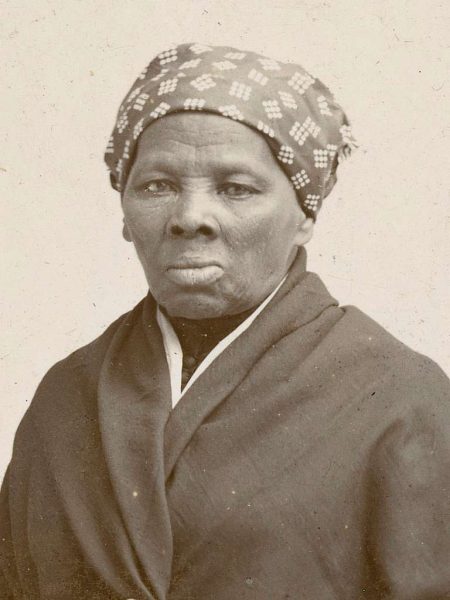
Harriet Tubman, an enduring symbol of bravery and resilience, is one of the most influential women in American history, making her a powerful figure to celebrate during Women’s History Month. Born into slavery around 1822 in Maryland, Tubman endured unimaginable hardships but never allowed her circumstances to define her. In 1849, she courageously escaped to freedom, but instead of simply securing her own safety, she risked her life repeatedly to help others do the same. As a conductor on the Underground Railroad, she led approximately 70 enslaved people to freedom, earning the nickname “Moses” for her unwavering dedication. Despite the dangers of capture, she never lost a single person on her missions. During the Civil War, Tubman further demonstrated her heroism by working as a nurse, scout, and even a spy for the Union Army. She played a crucial role in the Combahee River Raid, which freed over 700 enslaved people in South Carolina. After the war, Tubman dedicated her life to advocating for civil rights, women’s suffrage, and the welfare of formerly enslaved people. She established a home for the elderly, ensuring those in need had a place of refuge in their later years. Her remarkable courage, selflessness, and commitment to justice continue to inspire generations. Harriet Tubman’s legacy is a testament to the power of perseverance, making her an essential figure to honor during Women’s History Month. She not only changed lives in her time but also paved the way for future generations to fight for freedom and equality.
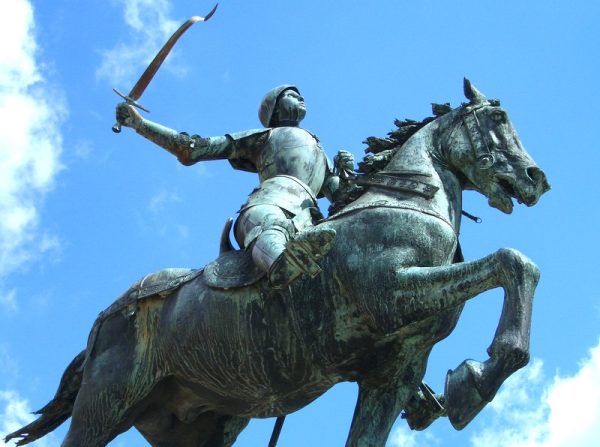
Joan of Arc, a symbol of courage and faith, is one of history’s most remarkable women, making her an inspiring figure to honor during Women’s History Month. Born in 1412 in Domrémy, France, Joan was a peasant girl who believed she was divinely chosen to lead France to victory during the Hundred Years’ War. At just 17, she convinced Charles VII, the heir to the French throne, to let her lead an army against the English. Clad in armor and carrying a banner rather than a weapon, Joan played a crucial role in lifting the Siege of Orléans in 1429, a turning point in the war. Her leadership and unwavering faith made her a national hero, but political enemies soon betrayed her. Captured by the Burgundians in 1430 and handed over to the English, she was put on trial for heresy. Despite her steadfast defense, she was convicted and burned at the stake in 1431 at just 19 years old. However, her legacy endured, and in 1456, she was exonerated by a posthumous retrial. Centuries later, she was canonized as a saint in 1920. Joan of Arc’s story is one of bravery, resilience, and defying societal expectations. She shattered medieval gender norms by becoming a military leader and remains a powerful example of determination in the face of adversity. Her legacy continues to inspire women to break barriers and fight for their beliefs, making her a fitting figure to celebrate during Women’s History Month.
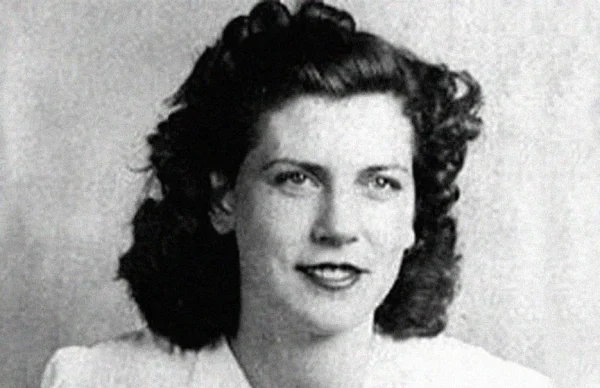
Maria E. Beasley was a pioneering inventor whose innovations made significant contributions to public safety and industry, particularly in the 19th century when few women held patents. Born in the early 1800s, Beasley defied societal expectations by becoming a successful entrepreneur and engineer. She is best known for her improvements to the life raft, a crucial advancement that has saved countless lives at sea. Before her invention, life rafts were often flimsy and unreliable, but Beasley designed a sturdy, collapsible raft with guardrails that could be quickly deployed in emergencies. Her patent, granted in the 1880s, was later used in major maritime vessels, including the Titanic. In addition to her life raft, Beasley held numerous other patents, including one for a barrel-making machine that revolutionized the cooperage industry by increasing efficiency and reducing manual labor. Her work earned her financial success and demonstrated that women could excel in fields traditionally dominated by men. Despite the barriers she faced, Beasley’s ingenuity and determination allowed her to leave a lasting impact on engineering and safety technology. Her legacy remains an important reminder during Women’s History Month of the critical yet often overlooked contributions women have made to innovation. By breaking into male-dominated industries and improving essential technologies, Maria E. Beasley paved the way for future generations of female inventors and engineers. Her story continues to inspire those who challenge norms and strive to create a better, safer world through creativity and perseverance.

Sally Ride made history on June 18, 1983, when she became the first American woman to travel into space as a crew member on the Space Shuttle Challenger. Her groundbreaking achievement shattered gender barriers in the male-dominated field of space exploration and paved the way for future generations of women in STEM (science, technology, engineering, and mathematics). Born on May 26, 1951, in Los Angeles, California, Ride was a talented physicist and engineer with a passion for science. She earned her Ph.D. in physics from Stanford University before being selected by NASA in 1978 as part of the first group of astronauts to include women. Ride’s contributions to space exploration extended beyond her historic flight; she flew on a second mission in 1984 and later worked at NASA to improve robotics and astronaut training. After leaving NASA, she became a dedicated advocate for science education, particularly for young girls, founding Sally Ride Science to inspire students to pursue careers in STEM fields. Throughout her life, she remained a private person, but after her passing in 2012, it was revealed that she was also the first known LGBTQ+ astronaut, further cementing her legacy as a trailblazer. Sally Ride’s courage, intelligence, and commitment to education continue to inspire countless individuals, making her a fitting figure to celebrate during Women’s History Month. Her legacy serves as a reminder that women belong in every field, including space, and that barriers can be broken through perseverance and passion.






